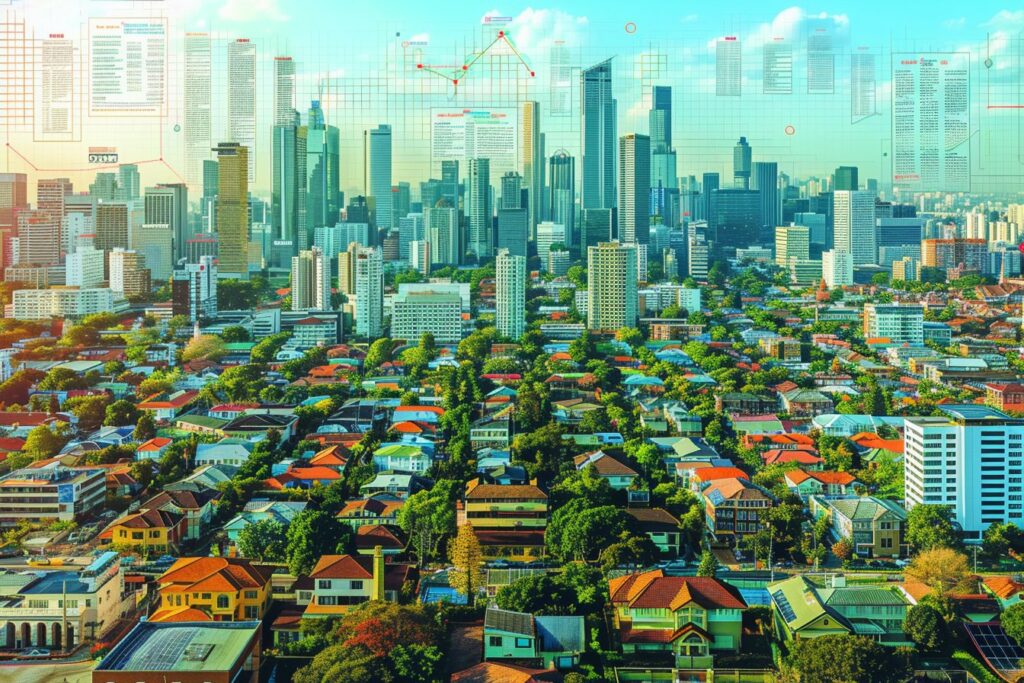The real estate market is known for its fluctuation, often showing signs of growth and decline in a cyclical pattern. However, what causes these cycles can be less clear to investors and property owners. This article will delve into the factors that contribute to changes in the real estate market, including financial cycles, property prices, local physical cycles, and urban planning projects.
Financial Cycles and Their Impact on Real Estate
One of the primary drivers of real estate market cycles is the broader economic landscape. Macro-economic factors, such as interest rates and inflation, play a significant role in shaping the demand and supply dynamics of the property market. As these variables change over time, they create fluctuations in different phases of the real estate cycle.
Interest Rates
Interest rates are a critical factor influencing property demand, as they directly affect the cost of borrowing money for homebuyers and investors. When interest rates are low, it becomes more affordable to take out loans or mortgages, which leads to increased demand for properties. On the other hand, higher interest rates make borrowing more expensive, resulting in decreased demand and potential market stagnation.
Inflation
Inflation refers to the general rise in the price of goods and services over time. As inflation increases, the purchasing power of consumers diminishes, potentially leading to reduced demand for high-priced assets, such as real estate. Additionally, inflation may prompt investors to seek alternative investments with higher returns, steering them away from the property market.
Dynamics of Property Prices
The ebbs and flows of property prices also contribute to real estate market cycles. The balance between supply and demand heavily influences property values, with housing shortages often leading to rising prices and a booming market. Conversely, an oversupply of properties can cause prices to fall, resulting in a stagnant or declining market. Other factors impacting property prices include:
Local Economic Conditions
The financial health of the local economy plays an essential role in determining property values. A strong local job market can attract a greater number of prospective buyers and tenants, driving up demand and property prices. On the other hand, poor economic conditions can lead to increased unemployment rates and reduced demand for housing, causing property values to drop.
Population Growth and Demographics
A growing population positively impacts housing demand and frequently leads to property price growth. Additionally, demographic shifts within an area can impact the types of properties most sought after, affecting market dynamics. For example, a surge in young professionals seeking rental apartments may result in higher rental yields and strengthening demand for apartment developments.
Local Physical Cycles: Understanding Natural Occurrences and Infrastructure
Regional variations, local infrastructure development, and natural occurrences also play integral roles in shaping real estate market cycles. As these factors vary from region to region, they contribute to localized physical cycles that often differ from national trends.
Natural Occurrences
Nature-related events such as floods, wildfires, and severe weather patterns can have a considerable influence on local property markets. Such events might directly affect the value of properties in disaster-prone areas through damage and increased insurance premiums. Furthermore, the general perception of risk in these locations may deter investors, leading to lower demand and declining property values.
Infrastructure Development
Well-connected infrastructure, including public transport networks and amenities like schools and hospitals, boosts the livability of an area and contributes to property price appreciation. Conversely, inadequate infrastructure can reduce a neighborhood’s appeal, leading to lower demand and consequently, dampened price growth.
Urban Planning Projects: Effects on Property Markets
Large-scale urban development projects tend to have a profound impact on nearby property markets. These developments often act as catalysts for change, influencing supply-demand dynamics and ultimately shaping local market cycles.
The Redevelopment of Industrial Zones
The transformation of industrial zones or brownfield sites into mixed-use or residential developments can lead to increased housing supply and amenities in an area. This added value attracts new businesses and potential residents, driving up demand and property prices.
Public-Private Partnerships (PPPs)
Projects involving collaboration between public entities and private companies can also influence property markets. PPPs might involve the construction of new transport systems, housing projects, or commercial spaces, all of which impact local real estate values.
Regeneration Projects
Urban regeneration initiatives, such as new parks or revitalized waterfronts, can create attractive environments that attract investors and homebuyers alike. As demand increases in these areas, property prices will likely follow suit, contributing to the dynamic landscape of real estate market cycles.
In conclusion, understanding the factors influencing real estate market cycles is crucial for both investors and property owners looking to make informed decisions. By examining elements such as financial cycles, property prices, regional variations, and urban planning projects, individuals can better anticipate changes and capitalize on emerging trends within the real estate sector.





